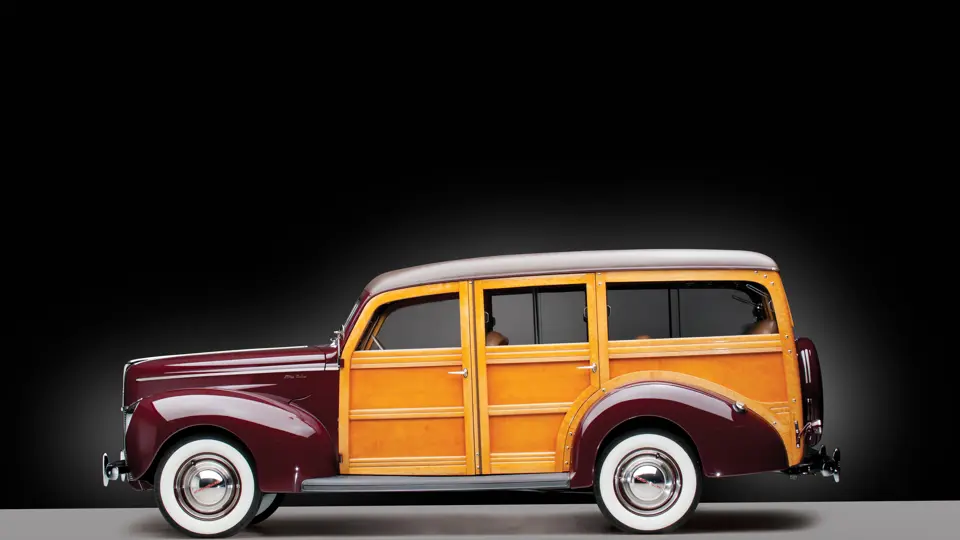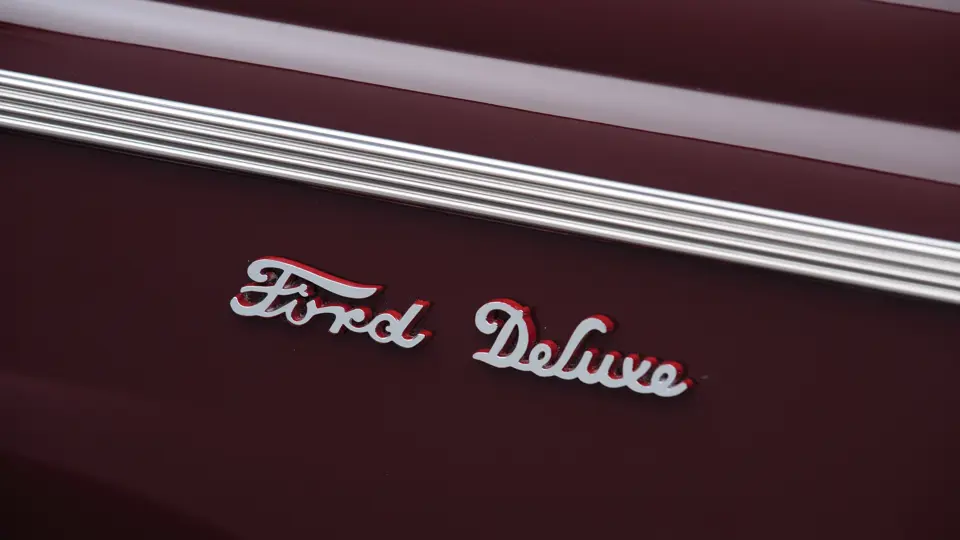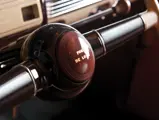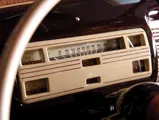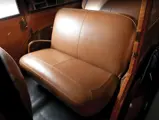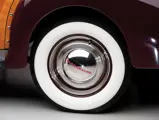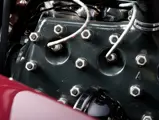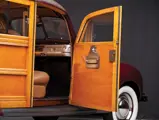MODEL 01A. 239 cu. in. L-head V-8 engine, three-speed manual transmission, solid front axle and live rear axle with transverse semi-elliptic leaf springs, and four-wheel hydraulic drum brakes. Wheelbase: 112"
Through 1939, Ford’s station wagon bodies were assembled by Murray Corporation of America, from wood grown in Henry Ford’s northern Michigan forests. That year, however, relations between Ford Motor Company and Murray soured. This led Ford to consider in-house production of the station wagons. Discussions with the management of the Iron Mountain operation, then providing the wood parts to Murray for assembly, resulted in a proposal for all body assembly to be done in the northern Michigan locale and that bodies be sent to assembly plants fully finished and trimmed. The change took place at the beginning of the 1940 model year.
The bodies took on a much different appearance. The roofline was subtly altered, becoming more rounded at the windshield header. Panel spacing was changed, such that the lower panel became narrower, and the rear quarter panels were consolidated into one piece. The rear doors, formerly hinged at the back, “suicide” style, now swung toward the front. The spare tire, housed inside in 1938 and ’39, on the back of the driver’s seat, was returned to the tailgate, where it had been located from 1935 to 1937. Deluxe wagons were given the option of maple or birch framing, while Standards came in maple only. Darker-colored gumwood began to be used for panels, in addition to birch, in both series. The choice of material was random. Bodies were given three coats of varnish, hand-sanded between each application.
Deluxe woodies also got an adjustable front seat, the same assembly used in the convertible. Seats for the Deluxe had the cushions faced in genuine brown Spanish grain leather. Dearborn management was pleased. Quality increased over that of the bodies built by Murray, at a lower unit cost.
Three engines were available: the popular 221 cubic inch 85 hp V-8, the small 136 cubic inch 60 hp V-8 (installed in just two Standard wagons), and the larger 239 cubic inch 95 hp V-8 from the new Mercury, which was fitted to 354 Deluxe station wagons.
This 1940 Deluxe station wagon is one of those built with the 95 bhp Mercury engine. It was found in a San Francisco boatyard in 2007 and required restoration. In exploring options for the body, it was decided to pursue one of the rarer and occasional features found on Ford woodies: birdseye maple.
“Birdseye” refers to its grain pattern, resembling a sea of tiny, swirling “eyes” that disrupt the normal straight lines of grain. It is not a species of tree but rather a condition that arises from complex causes. Birdseye grain is known to occur in ash, mahogany, beech, walnut, and birch, but by far, the most common birdseye is found in Acer saccharum, the sugar maple. Experience has shown that the greatest concentration of birdseye trees lies in the forests of the Great Lakes region of Canada and Michigan: the location of Iron Mountain. Birdseye maple has a medium density and variable color. The wood works well on a lathe or shaper but is hard enough that it does not scratch easily. Thus, it is highly prized for making fine furniture or alternatively, automobile bodies or trim.
The prevalence of birdseye grain in northern Michigan led to its use in Ford station wagons. Usually this took the form of random birdseye pieces incorporated into bodies, as and when the craftsmen came across them. Occasionally, however, a station wagon body would be framed mostly or even entirely from birdseye maple. A long-standing tradition holds that Henry Ford ordered the retention of a small inventory of birdseye wagon parts. From time to time, it is said, he would order a “birdseye wagon” to be constructed, either for a special customer or for presentation on a particular occasion.
While the restoration of this car was entrusted to Jim Lowrey’s restoration shop in Tilton, New Hampshire, the wood work was performed by Mike Nickels in Traverse City, Michigan. Ford-built birdseye wagons varied in their use of the treasured wood, perhaps depending on the client involved. For the Dingman birdseye car, Nickels pulled out all the stops, as nearly all framing members are so endowed. The use of maroon paint for the steel panels is particularly appropriate, as it provides the perfect backdrop for the pattern of the wood. It exhibits a deep shine, nicely complemented by the correct brown grained artificial leather on the roof. The seats are upholstered in original-pattern brown leather, set off by the exquisite maroon and gold instrument panel of the 1940 Ford Deluxe models. The engine compartment is clean and correctly detailed, with the engine painted Mercury Blue.
As a final flourish, the car is equipped with wheel trim rings and runs on double-whitewall Ford script tires. All told, the restoration costs amounted to approximately $280,000, the superiority of which is readily apparent. Having been hardly driven since restoration but professionally maintained, the car appears precisely the way it would have in someone’s garage the day after it was bought in 1940, or perhaps gifted personally by Henry Ford himself to a VIP client!


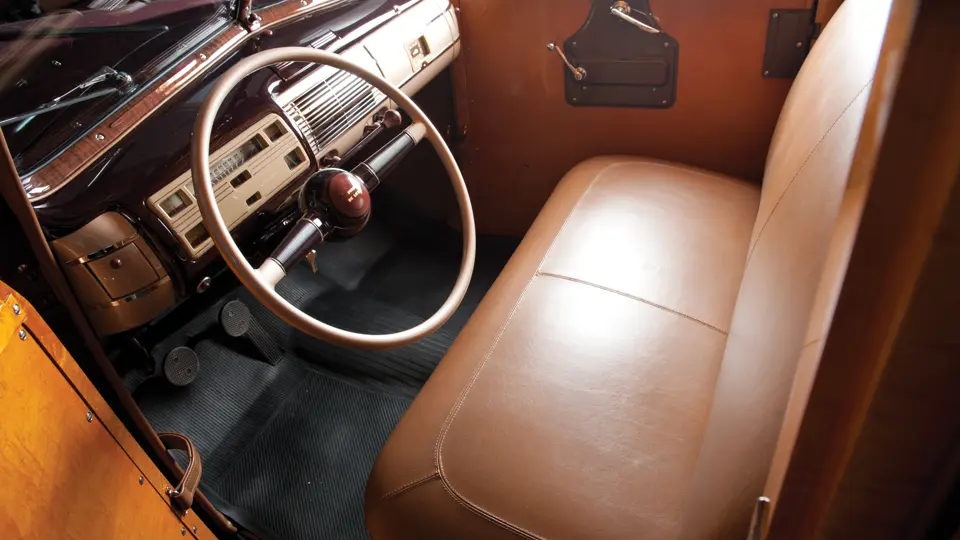

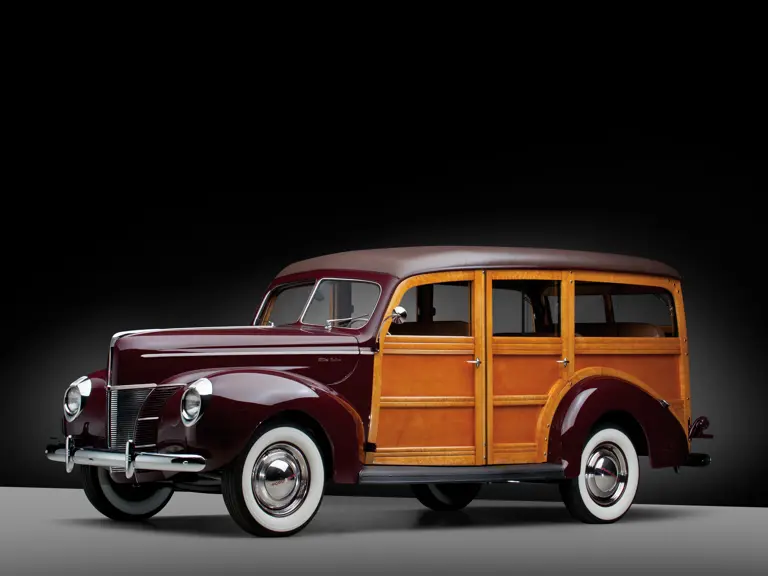



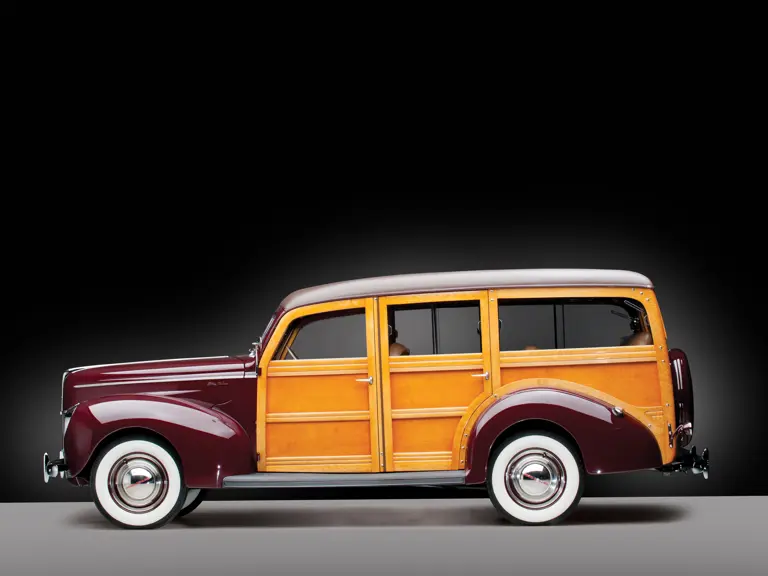

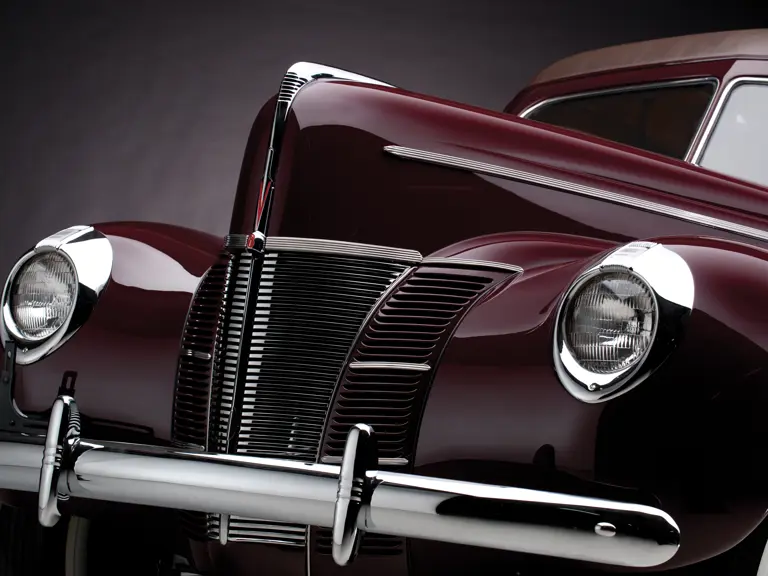
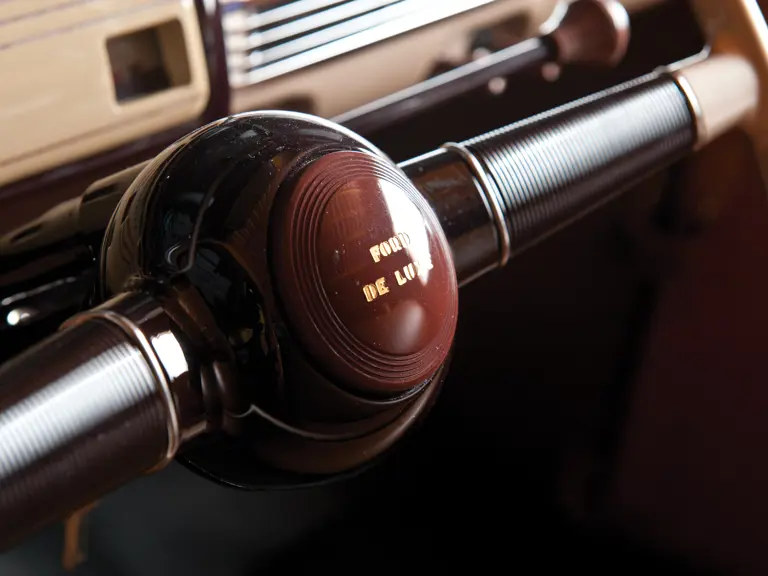

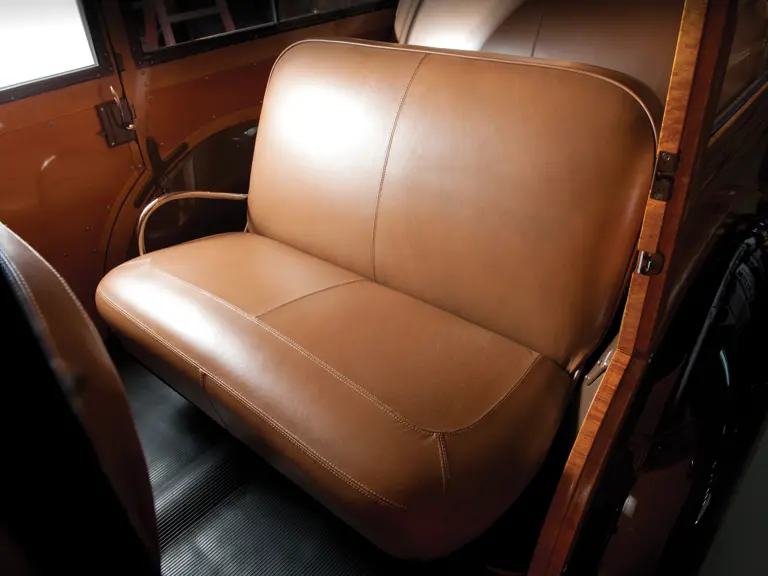


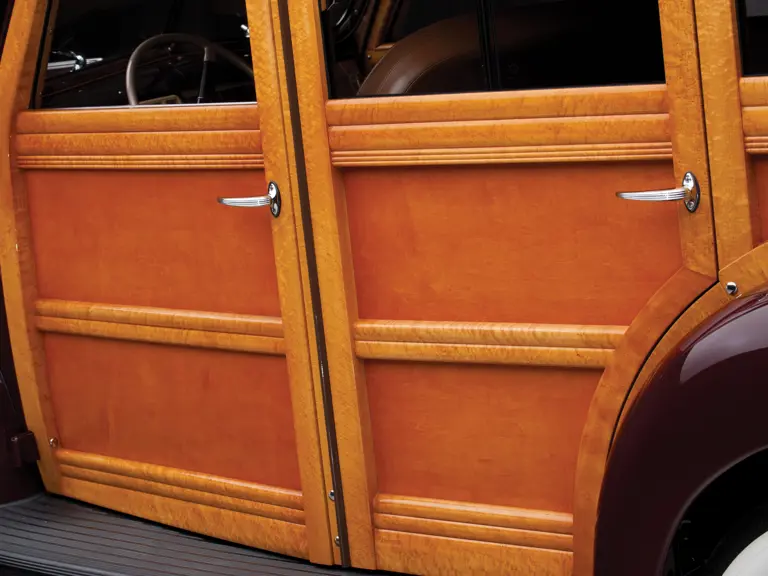




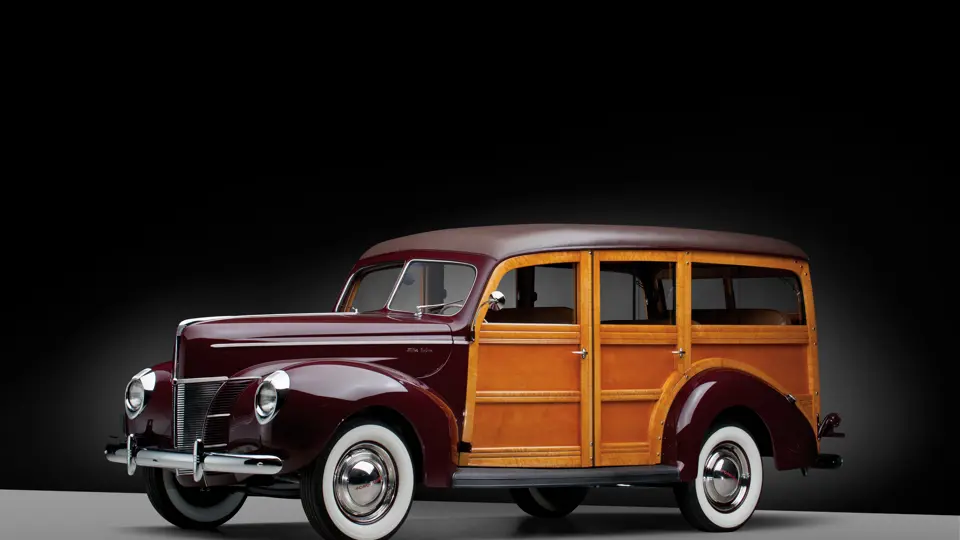
 | Hampton, New Hampshire
| Hampton, New Hampshire
